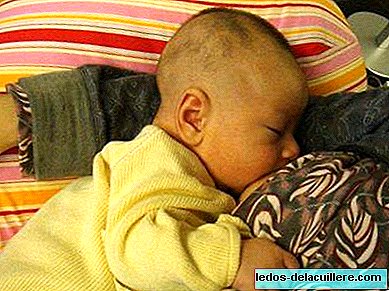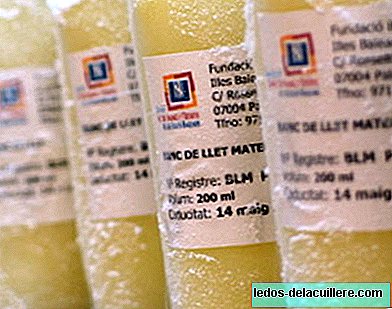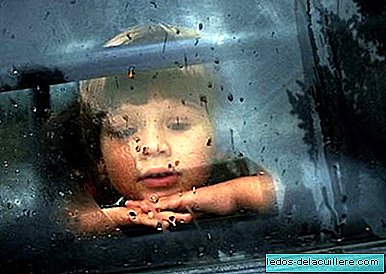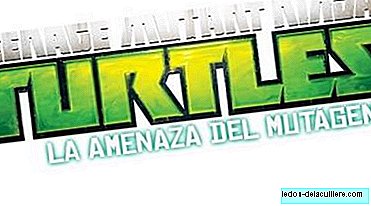A few years ago the debate jumped in our country about the use of tupper in the school canteen. Some Autonomous Communities opted for this measure as a way to help families with economic problems, while others did not even raise the issue.
Today there are several schools, both public and private and concerted, that offer this modality to their students. Parents who benefit from this service claim to be satisfied by the lunch savings and quality That your children take. However, for nutritionists, tupper children may have significant deficiencies in their diet.
When lunch time arrives, it is common in other countries for children to take out their own food cakes and taste the homemade menu prepared by their parents before going to school.
Although in our country, Homemade tupper is allowed in some centersThe normal thing remains that most children eat school food, although in my opinion it should be a free choice option in all schools.
In favor of the tupper
As a child, I studied at a school where students were allowed to bring food from home. The dining room had an area enabled for "basket students", as we were called, where we ate lunchtime. In my backpack I always carried two thermoses with a hot first and second plate, and a piece of fruit. I also had to bring my own cutlery and napkin, and the dining room offered us bread and water.
Over time, as the mother of a food allergic boy and a three-year-old girl who has a hard time eating, I think the homemade tupper would have saved us a lot of trouble. However, this option is not considered in the school where my children study.
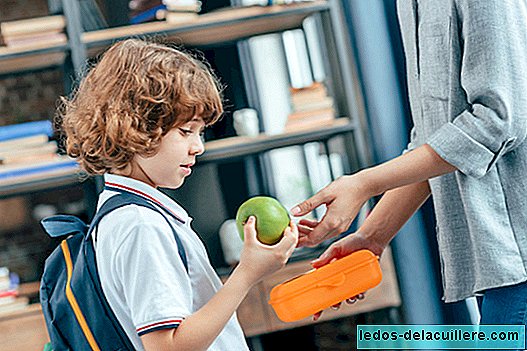
With sadness and resignation I read every evening the report prepared by my daughter's dining room monitor, and it is rare the day that tells me she has eaten well (or at least regular!). Every morning, my girl whines at the time of the dining room and begs to eat at home.
And it is that contrary to what many people told me when the school canteen began, my daughter has not improved to see other friends eat. Quite the contrary: she gets nervous and suffers when everyone around her finishes her dishes and she continues to go around a meal that also displeases her completely. Therefore, I am convinced that in these cases, the option of tupper, with "known and mom's food" would be very beneficial.
On the other hand, I have the bad experience of my oldest son (allergic to cow's milk proteins) in the dining room of his previous school, where despite taking special care of allergic students, suffered the consequences of cross contamination.
Although unfortunately accidents can occur, families of allergic children are very aware and involved with the feeding of our children. In addition, knowing firsthand the food they are consuming, as well as the ingredients of the recipe and the control that has existed during its preparation, gives us great peace of mind.
However, the issue of food allergies is also used by professionals as an argument against tupper, because they claim that the allergic group integration achieved over the last few years, it is again committed to choosing this modality.
And one last argument in favor of the tupper would be the economic savings for families, because the fee to pay for using the dining room facilities (space to eat, fridge to store food, microwave to heat ...), in most cases, is far from the monthly cost to be paid by users of the school canteen.
Against tupper
This measure came into force in 2012 in some Autonomous Communities. The first to join were Catalonia, the Valencian Community, Galicia and Madrid, where regional governments opted for the use of cakes in public schools as a way to help families with economic problems.
However, some Parent Associations warned that precisely this option could mark certain students: on the one hand, those who use the school canteen because their families can afford it economically, and on the other who should turn to the homemade tupper on the contrary.

The centers themselves also expressed doubts about it, raising questions about the infrastructures necessary to preserve food safely, how to place these students in the dining room and how to proceed with their surveillance.
In the case of food security, for example, it is essential to have refrigerators where children can store their tuppers and ensure proper maintenance of food, especially in hot weather. Likewise, the dining rooms must also have microwaves and staff to monitor these students.
On the other hand, nutritionists are totally opposed to this measure and warn of possible nutritional deficits that tupper students can present. And, as they explain, there is a risk that the menus of these children are not balanced and varied, as are the menus of school canteens, which follow rigorous quality criteria.
In this way, they fear that the fact that parents fill their children's tupper with easily preserved foods (for fear that the food will spoil), fast elaboration (without meeting the nutritional needs of growing children) , or even a single food, far from benefiting them seriously harm children's health. But it is in our hands to bet on nutritious, healthy and balanced menus.
The rules of the schools where tupper is allowed
The first word when authorizing tupper in school canteens is the Autonomous Communities, although they are their own educational centers who finally decide what to do.
In the Community of Madrid, for example, when this measure was approved, there were 791 public centers for Infant and Primary that took advantage of it, adding to other private schools that also contemplated this option, or had long established it.
Among these schools is the Alcorcón Dawn School Center, which allows the use of tupper from Third Primary, as long as the hot food is taken in an airtight container and the students' homemade menu conforms to the one offered by the dining room .
In the concerted colleague Solc, from Barcelona, this modality has been offered for more than 30 years, but in recent years the number of students with tupper has skyrocketed. On the other hand, in other centers, such as the Giovanni Antonio Farina school in Azuqueca de Henares, in Castilla la Mancha, only allows home-cooked food when there are food allergies.
For its part, the Colegio Nuestra Señora de Begoña Ikastetxea de los Jesuitas, in Bilbao, introduced this measure in 2013, although students who choose to take food from home must meet a number of conditions, such as the use of thermos and portable refrigerators and insulators, the correct identification of all materials, and the absolute hygienic-sanitary responsibility in the preparation and transport of food.
In summary, it seems that although in some centers this measure has been implemented for years, it still continues to generate some controversy between parents and professionals. In favor or against the use of tuppers in schools?Photos | iStock
Live to the Palate | Is it correct that they charge you for taking your own food to school? What do I put my son in the lunch box to eat at school?



